is an architecture design and research studio.
12.2025
Block by Block: Decoding New American Dreams of Housing opens at GBBN in downtown Cincinnati and is on view through January 30, 2026. We designed the exhibition to engage the public on the intersection of imaginative housing design and code reform.
![]()
Block by Block: Decoding New American Dreams of Housing opens at GBBN in downtown Cincinnati and is on view through January 30, 2026. We designed the exhibition to engage the public on the intersection of imaginative housing design and code reform.

12.2025
A Building Hugging a Breezeway receives an Editors’ Pick award in the Architect Newspaper’s annual Best of Design Awards. The six-story, single-stair residential building is shaped for solar access on infill lots while introducing an adaptable housing block form that bridges low to mid-rise density.
![]()
A Building Hugging a Breezeway receives an Editors’ Pick award in the Architect Newspaper’s annual Best of Design Awards. The six-story, single-stair residential building is shaped for solar access on infill lots while introducing an adaptable housing block form that bridges low to mid-rise density.
08.2025
Courtyard House is completed. Experimenting with zoning regulations, the design maximizes living space on a confined lot with an existing pool. The result is a house with as many outdoor rooms as indoor rooms.
![]()
Courtyard House is completed. Experimenting with zoning regulations, the design maximizes living space on a confined lot with an existing pool. The result is a house with as many outdoor rooms as indoor rooms.
08.2025
Along with Office for Roundtable, we propose a Timber Tower Wearing a Greenhouse Coat. While most mass timber structures are concealed behind facades, a greenhouse coat unveils the structure while shielding the timber from the elements. The greenhouse coat also adds a new layer of living space that be conditioned through passive means.
![]()
Along with Office for Roundtable, we propose a Timber Tower Wearing a Greenhouse Coat. While most mass timber structures are concealed behind facades, a greenhouse coat unveils the structure while shielding the timber from the elements. The greenhouse coat also adds a new layer of living space that be conditioned through passive means.
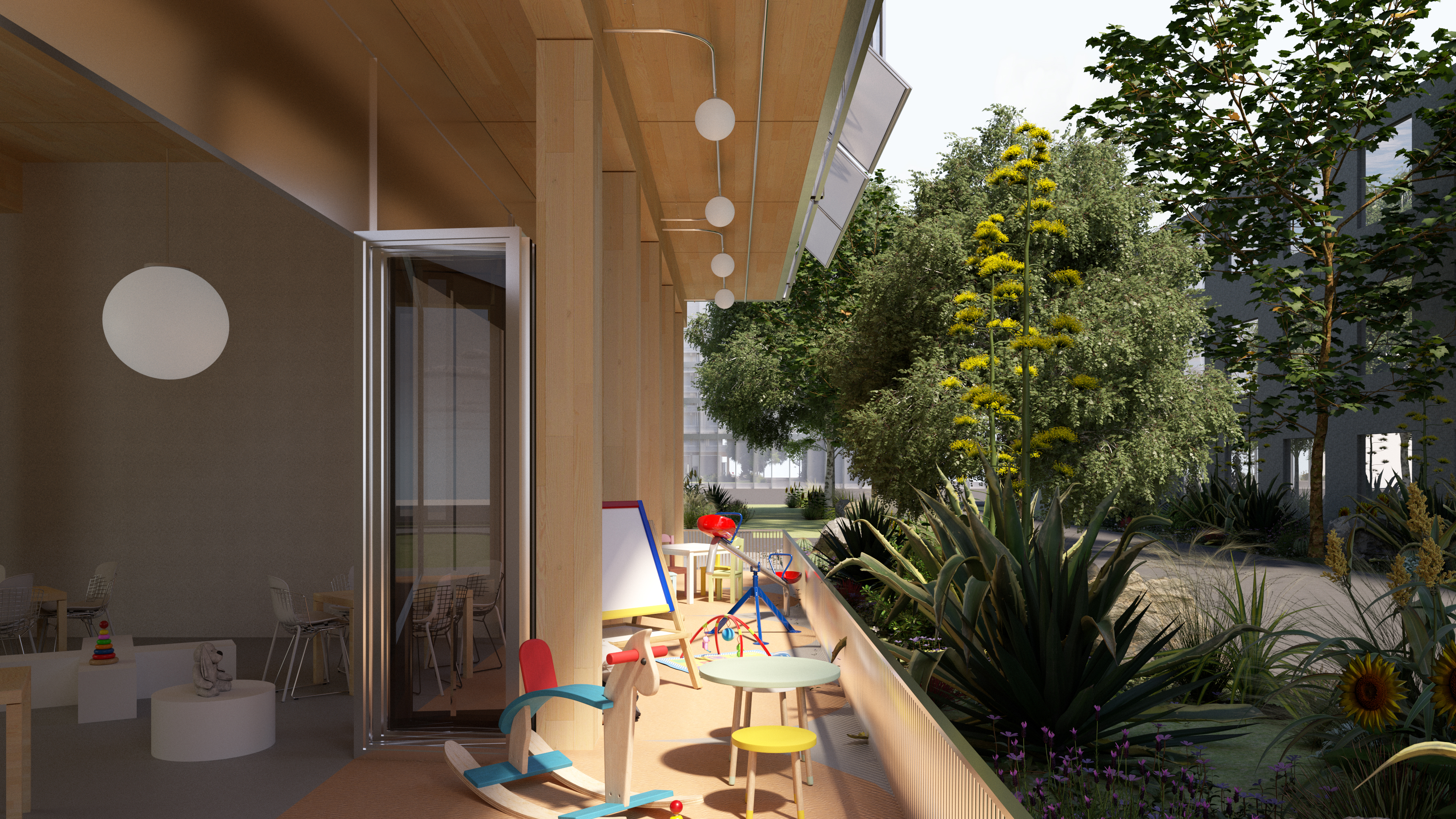
05.2025
We propose A Lot More for the City of Los Angeles’ Small Lots, Big Impacts initiative. The design makes creative use of California’s SB784 small lot subdivision law to create small-footprint, self-sufficient homes with shared outdoor space.
![]()
We propose A Lot More for the City of Los Angeles’ Small Lots, Big Impacts initiative. The design makes creative use of California’s SB784 small lot subdivision law to create small-footprint, self-sufficient homes with shared outdoor space.
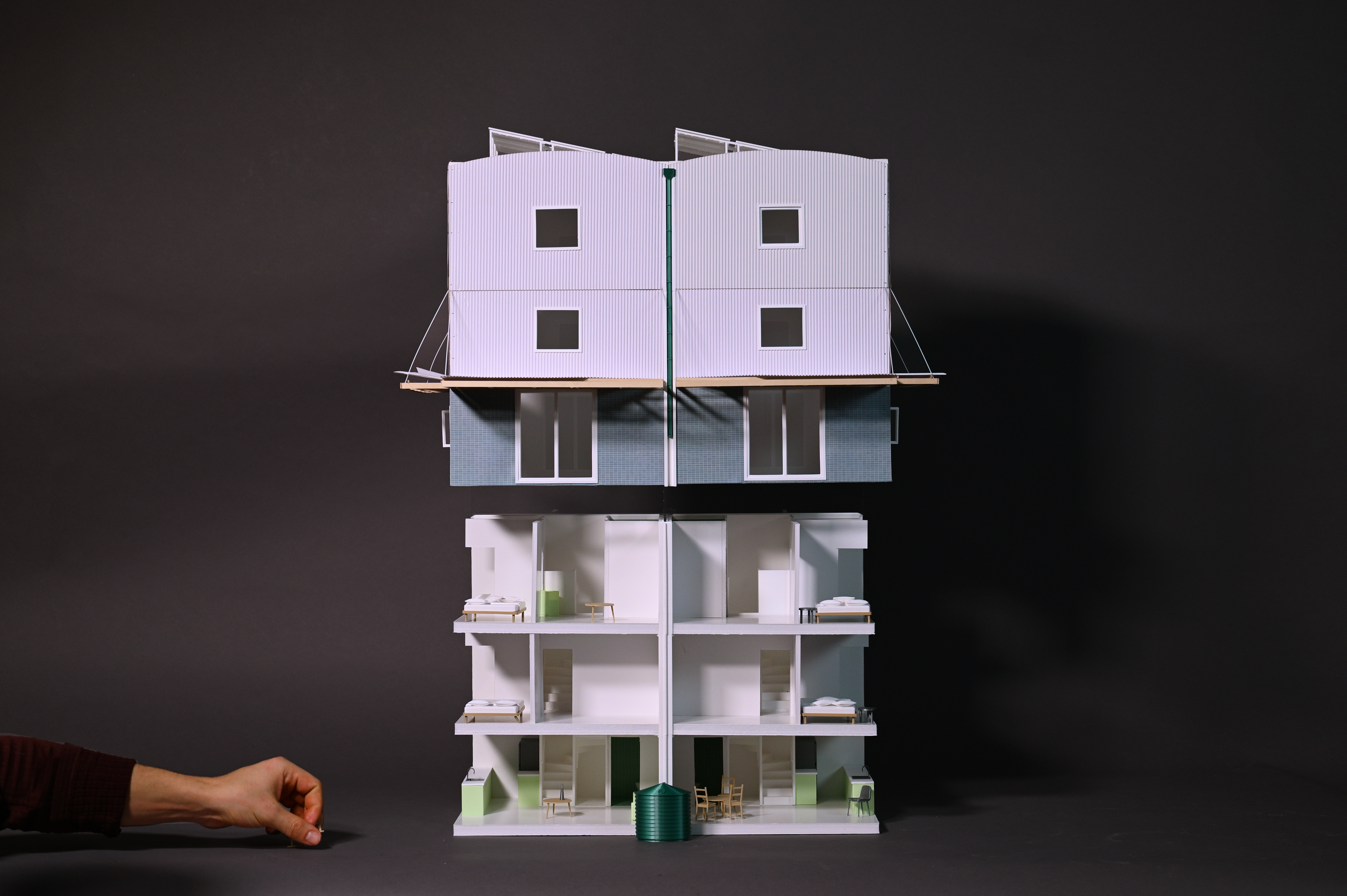
02.2025
We create a model of our Courtyard Block project that doubles as a board game. The game invites players to imagine new spatial relationships on a block using SB9, an upzoning law in California that is being debated across the state.
![]()
We create a model of our Courtyard Block project that doubles as a board game. The game invites players to imagine new spatial relationships on a block using SB9, an upzoning law in California that is being debated across the state.
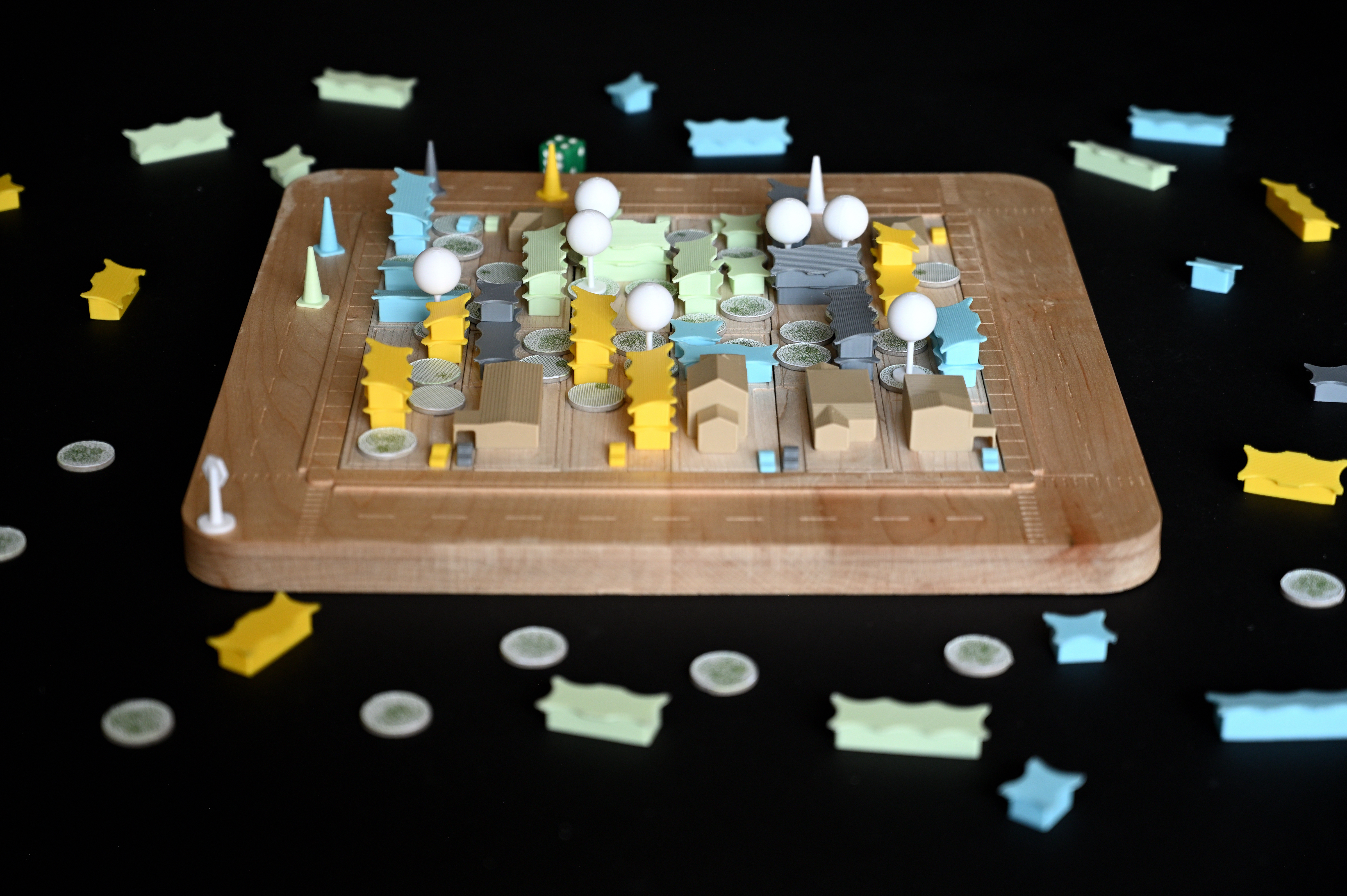
10.2024
We create a furniture series for Holding Pattern, our workshop temporarily activating vacant buildings in Cincinnati co-designed with EXTENTS. The furniture is an exercise in construction improvisation, and is assembled from salvaged building materials held together by custom connector parts.
![]()
We create a furniture series for Holding Pattern, our workshop temporarily activating vacant buildings in Cincinnati co-designed with EXTENTS. The furniture is an exercise in construction improvisation, and is assembled from salvaged building materials held together by custom connector parts.
09.2024
Dreamtroit opens in Detroit and renovates the former Lincoln Motor factory building into housing, retail, and entertainment spaces. We completed the masterplan and concept design for Dreamtroit as co-director at 1+1+ Architects.
![]()
Dreamtroit opens in Detroit and renovates the former Lincoln Motor factory building into housing, retail, and entertainment spaces. We completed the masterplan and concept design for Dreamtroit as co-director at 1+1+ Architects.
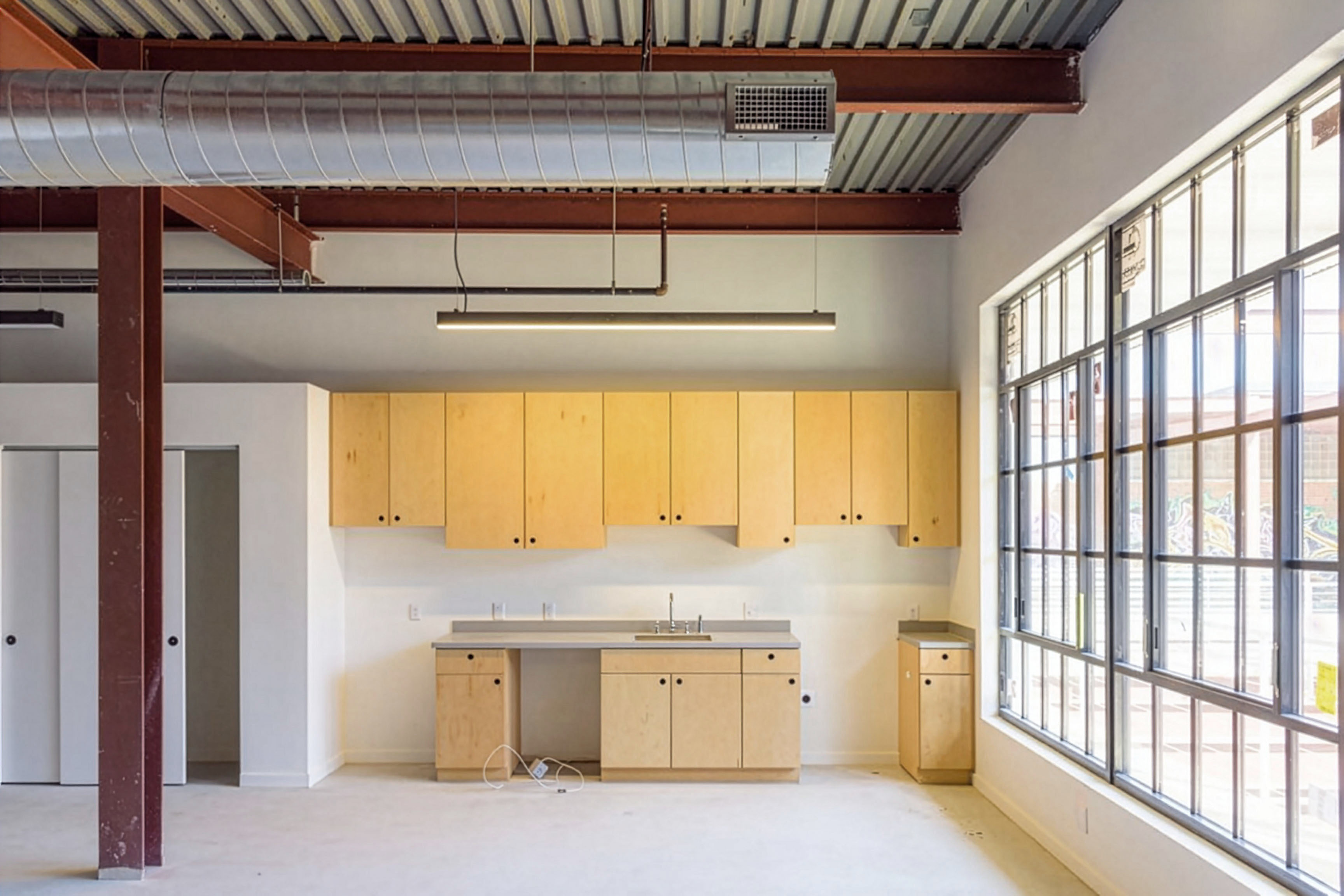
04.2024
Lots of Bundles, our proposal for infill mid-rise housing that revisits Ralph Knowles’ solar envelope concept, wins honorable mention in Urbanarium’s Decoding Density competition.
Lots of Bundles, our proposal for infill mid-rise housing that revisits Ralph Knowles’ solar envelope concept, wins honorable mention in Urbanarium’s Decoding Density competition.
03.2024
We create Cincinnati Reuse Collective, a photographic documentation of nearly fifty buildings in the Historic Structure Stabilization Program, a unique municipal program transforming historic buildings into new housing in Cincinnati.
![]()
We create Cincinnati Reuse Collective, a photographic documentation of nearly fifty buildings in the Historic Structure Stabilization Program, a unique municipal program transforming historic buildings into new housing in Cincinnati.

03.2024
How can design align with zoning reform to offer new forms of attainable and desirable housing? We write about the slow adoption of California’s SB9 zoning reform law and propose one possibility to increase its use in our article for the Architect’s Newspaper, titled “Zoning reform can build better residential blocks.”
![]()
How can design align with zoning reform to offer new forms of attainable and desirable housing? We write about the slow adoption of California’s SB9 zoning reform law and propose one possibility to increase its use in our article for the Architect’s Newspaper, titled “Zoning reform can build better residential blocks.”
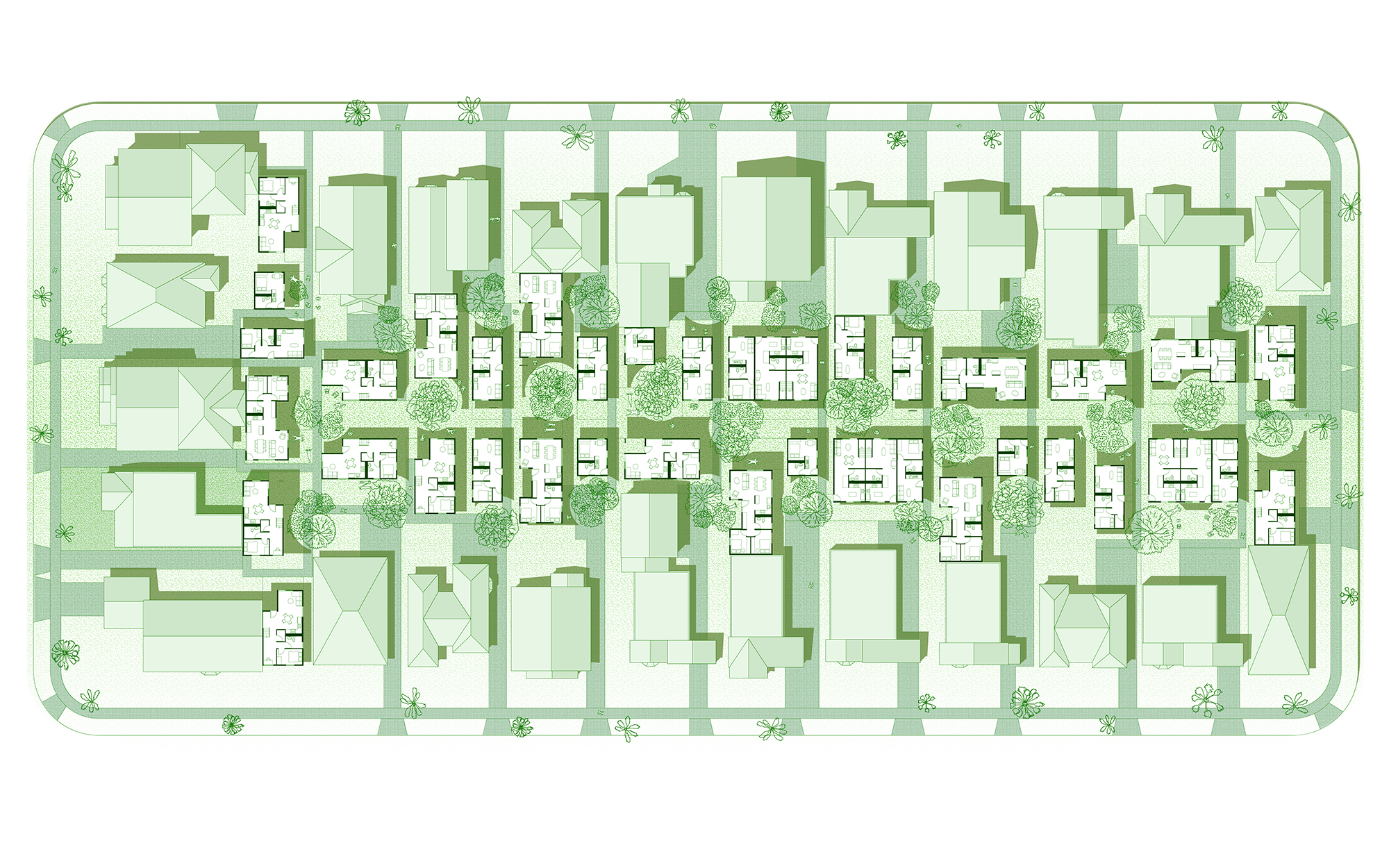
03.2024
Courtyard Block, our proposal for multi-family housing that densifies existing single-family zoned blocks wins honorable mention in the Los Angeles Affordable Housing Challenge.
Courtyard Block, our proposal for multi-family housing that densifies existing single-family zoned blocks wins honorable mention in the Los Angeles Affordable Housing Challenge.
02.2024
Can the single-family zoned residential block become a new type of collective architecture? Our collaborative proposal with Gabriel Cuéllar to study housing design and zoning reform receives the 2023 SOM Foundation Research Prize.
Can the single-family zoned residential block become a new type of collective architecture? Our collaborative proposal with Gabriel Cuéllar to study housing design and zoning reform receives the 2023 SOM Foundation Research Prize.

12.2023
Cincinnati’s many vacant, hillside lots create challenging conditions, pushing homebuilders to sprawling greenfield sites rather than focusing on reimagining the city core. We are leading a collaboration between the Univesity of Cincinnati DAAP and the Cincinnati Port to design new housing prototypes on city-owned land.
![]()
Project by Amanda Skyler and Leah Roodhouse
Cincinnati’s many vacant, hillside lots create challenging conditions, pushing homebuilders to sprawling greenfield sites rather than focusing on reimagining the city core. We are leading a collaboration between the Univesity of Cincinnati DAAP and the Cincinnati Port to design new housing prototypes on city-owned land.
Project by Amanda Skyler and Leah Roodhouse
10.2023
Courtyard House reaches a construction milestone with its structure and exterior walls completed. Courtyard House is an outward looking house that rethinks zoning logics to make as many outdoor rooms as indoor rooms.
![]()
Courtyard House reaches a construction milestone with its structure and exterior walls completed. Courtyard House is an outward looking house that rethinks zoning logics to make as many outdoor rooms as indoor rooms.
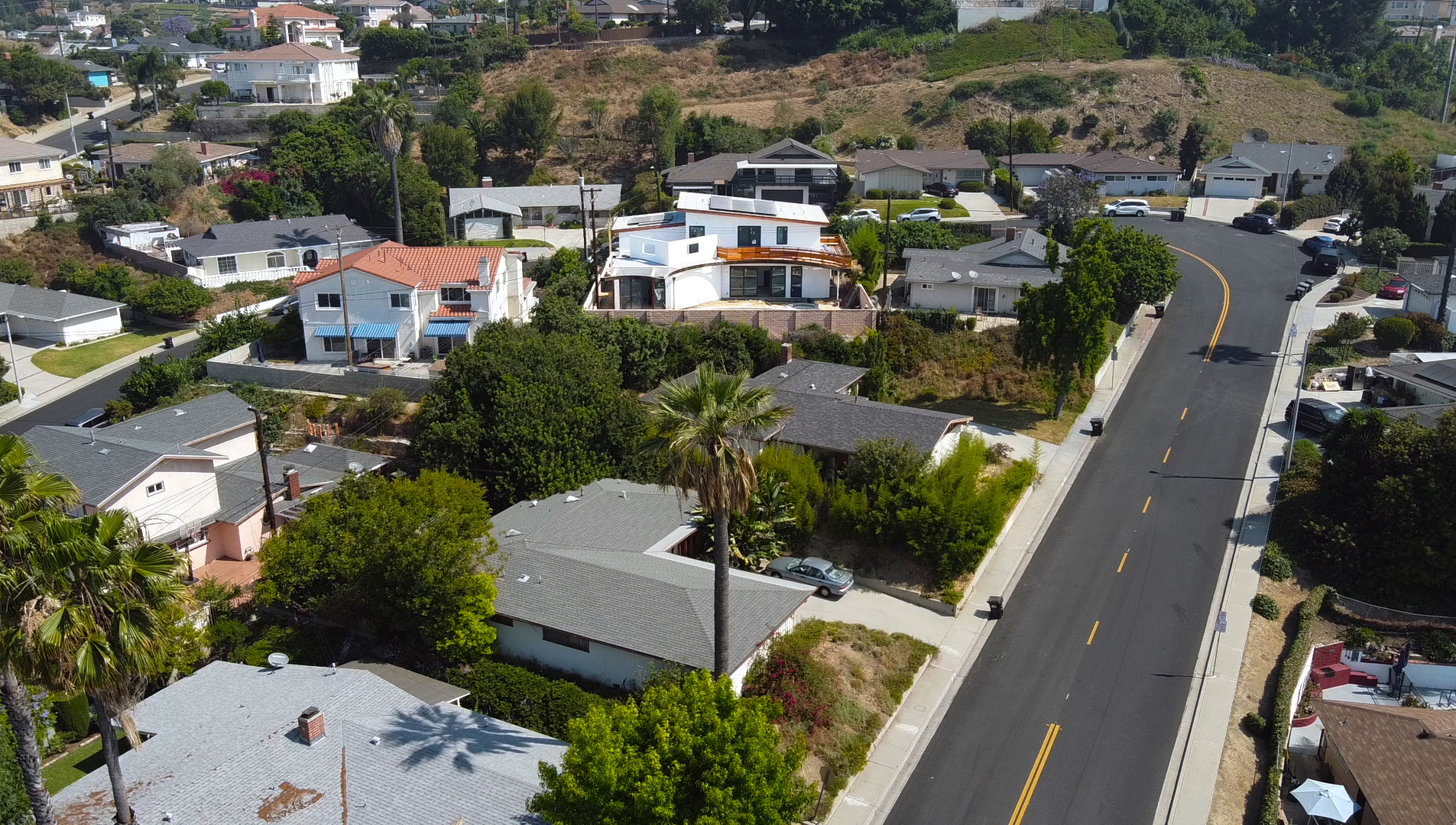
08.2023
Zoning reform is transforming the way we build with land. Mass timber is transforming the way we build with materials. Our proposal to explore their intersection receives the 2023 Timber Education Prize.
Zoning reform is transforming the way we build with land. Mass timber is transforming the way we build with materials. Our proposal to explore their intersection receives the 2023 Timber Education Prize.

08.2023
The Historic Structure Stabilization Program in Cincinnati enables collective efforts to reuse historic housing stock across the city. We stage an exhibition revealing the forces shaping these buildings and their future potential.
![]()
The Historic Structure Stabilization Program in Cincinnati enables collective efforts to reuse historic housing stock across the city. We stage an exhibition revealing the forces shaping these buildings and their future potential.

05.2023
Workshops can be designed to bring architectural tools and knowledge to new audiences. We co-author an article in the Architect’s Newspaper on what we have learned through co-desgining the Build a Chair = Reframe a House workshop.
![]()
Workshops can be designed to bring architectural tools and knowledge to new audiences. We co-author an article in the Architect’s Newspaper on what we have learned through co-desgining the Build a Chair = Reframe a House workshop.

04.2023
Residents of Detroit are demonstrating new forms of building and land stewardship. Our coauthored essay “Stewardship as Ownership,” published in Riverwise Magazine, calls attention to lessons learned after a year of conversations with Detroiters.
![]()
Residents of Detroit are demonstrating new forms of building and land stewardship. Our coauthored essay “Stewardship as Ownership,” published in Riverwise Magazine, calls attention to lessons learned after a year of conversations with Detroiters.
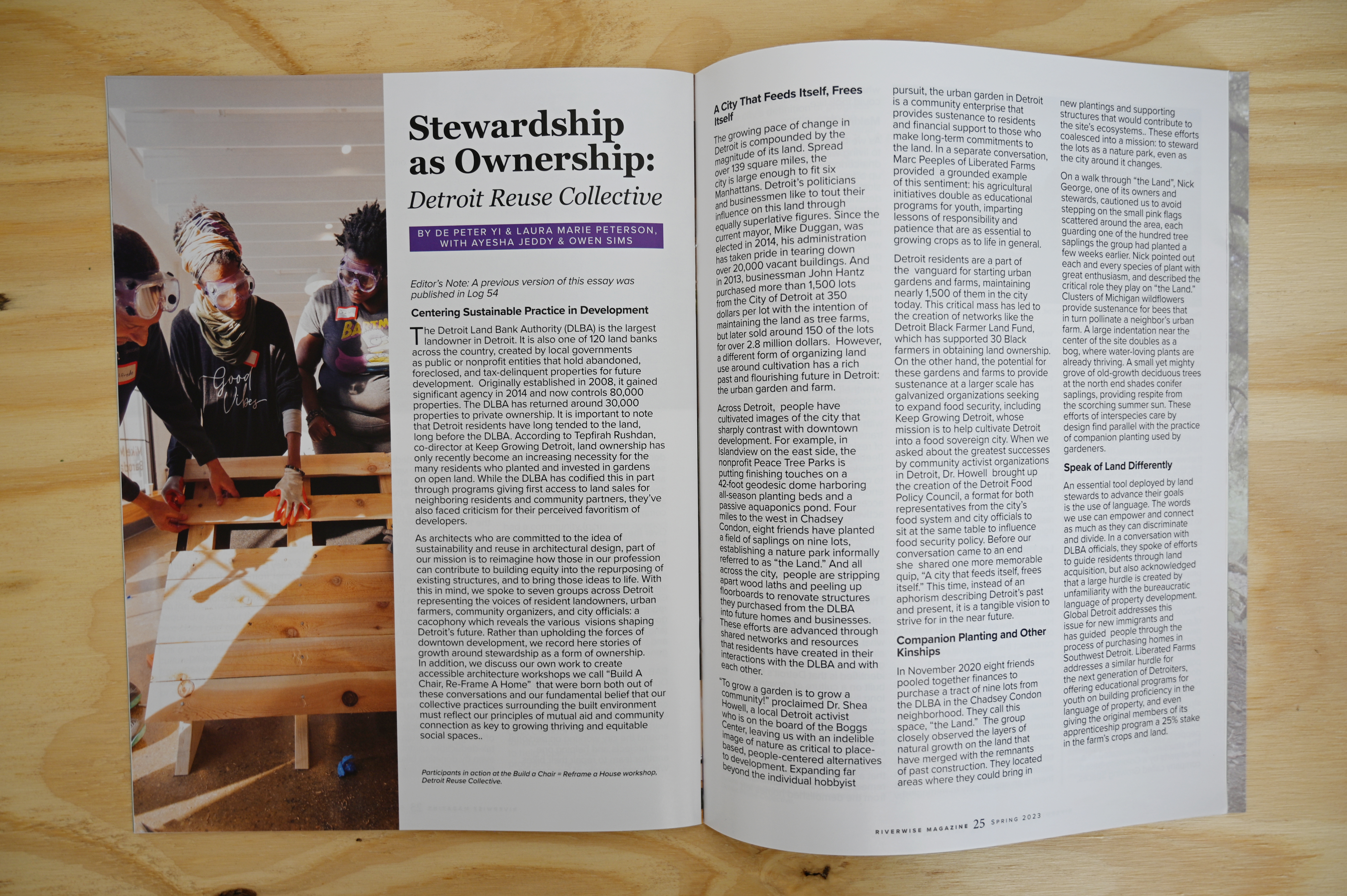
01.2023
Build a Chair = Reframe a House kicks off as a workshop collaboratively designed with 1+1+ Architects and Extents for Detroiters renovating houses for themselves and their communities. Read more on model D.
![]()
Build a Chair = Reframe a House kicks off as a workshop collaboratively designed with 1+1+ Architects and Extents for Detroiters renovating houses for themselves and their communities. Read more on model D.

11.2022
What coheres architecture? Our short piece posing this question in Plat 10.5 is inspired by our study of single room occupancy (SRO) housing, supported by the Houston Design Research Grant.
![]()

08.2022
We design the renovation of the former Banner Cigar Company building in Detroit into artist studios, live-work units, and maker spaces for non-profit organization 555 Arts.
![]()
We design the renovation of the former Banner Cigar Company building in Detroit into artist studios, live-work units, and maker spaces for non-profit organization 555 Arts.
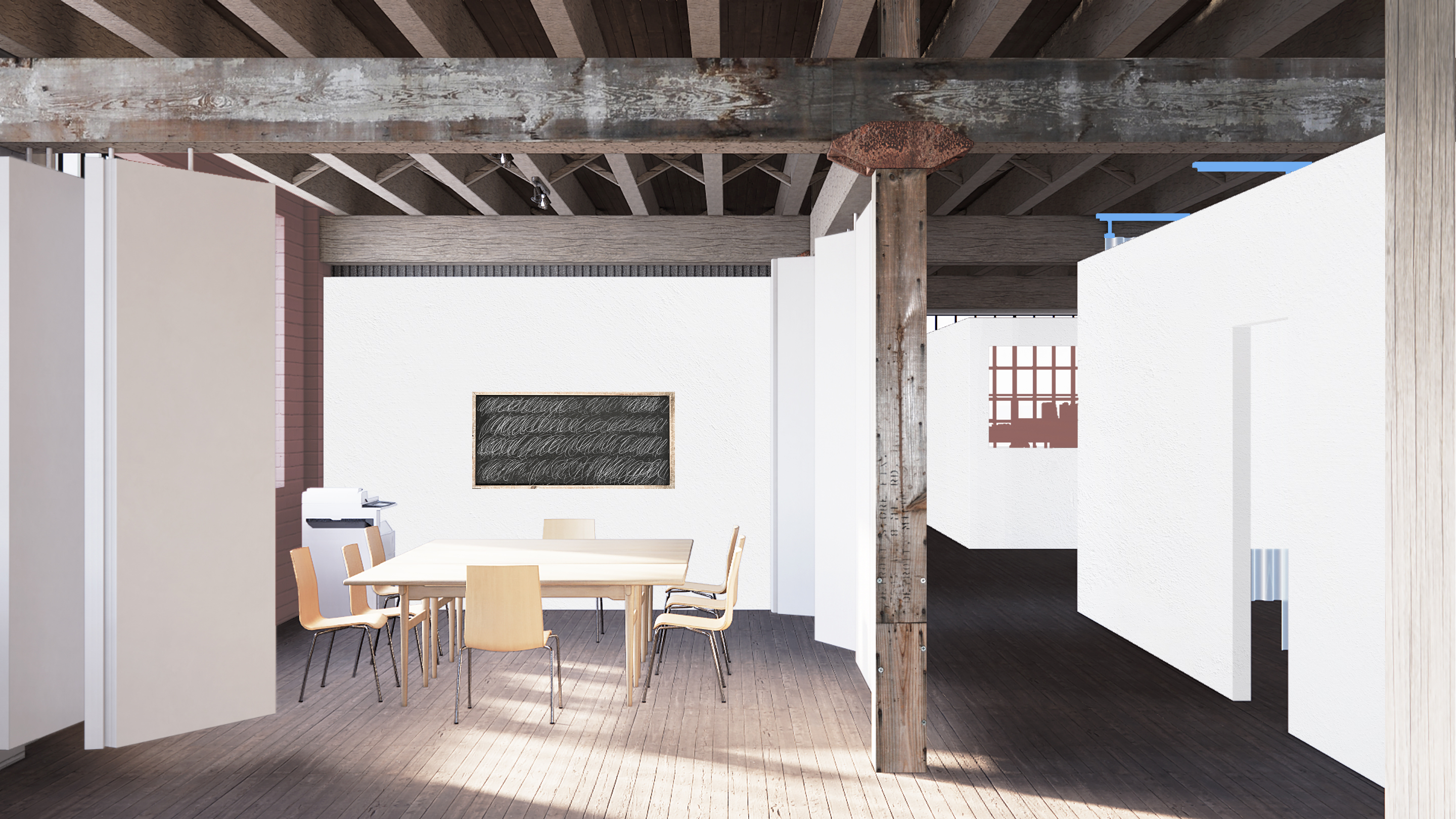
06.2022
In Detroit, residents are using lots and structures obtained from the Detroit Land Bank Authority to create new visions of the city. After initiating a year of conversations with Detroit residents and organizations, we document lessons learned in a co-authored essay titled “Stewardship as Ownership” for Log Journal.
![]()
In Detroit, residents are using lots and structures obtained from the Detroit Land Bank Authority to create new visions of the city. After initiating a year of conversations with Detroit residents and organizations, we document lessons learned in a co-authored essay titled “Stewardship as Ownership” for Log Journal.
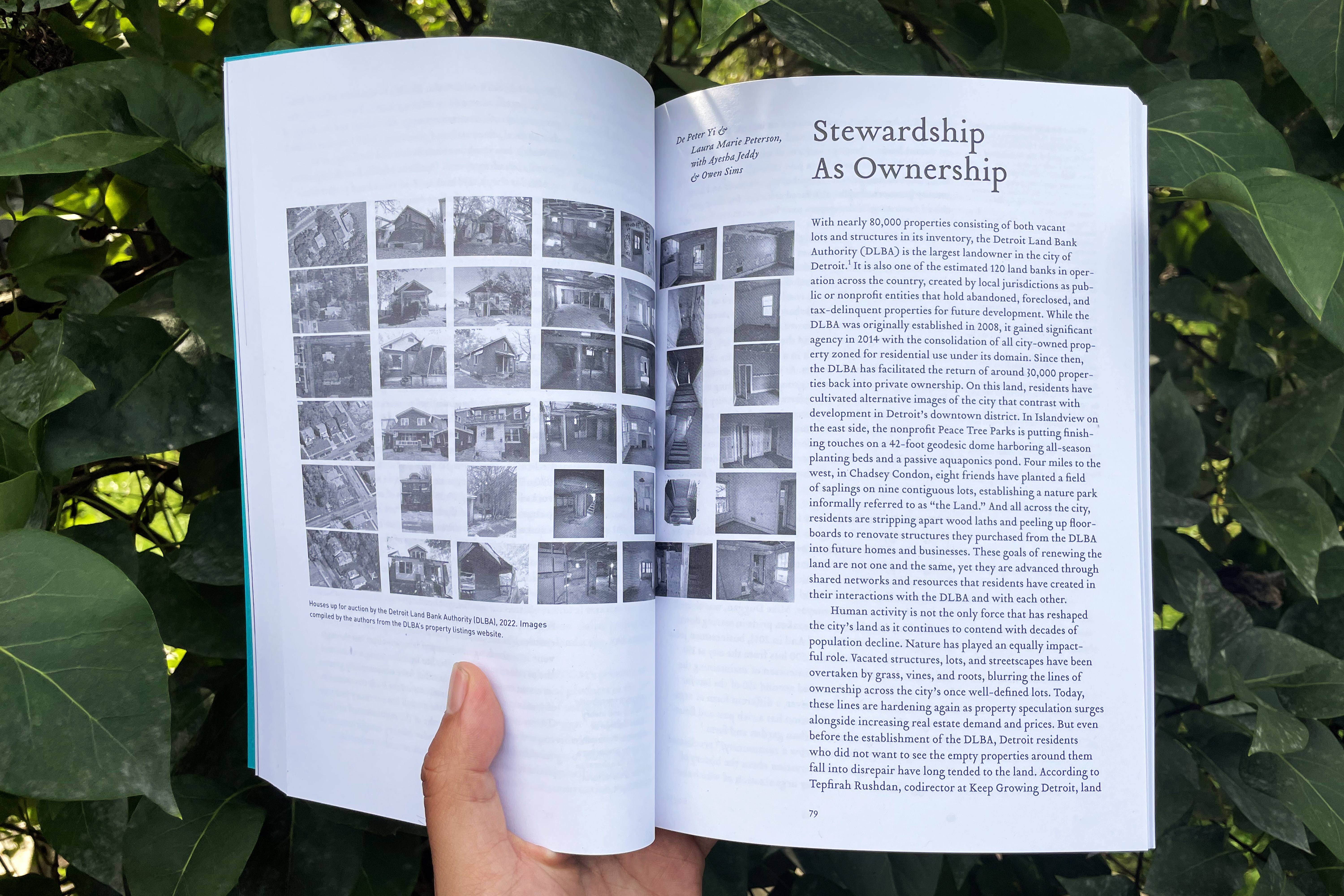
05.2022
Building with timber can be rethought through networked relationships stretching across urban, rural, and natural environments. We lead a course for University of Michigan students traveling 1,300 miles up the West Coast from Los Angeles to Vancouver, visiting buildings, institutions, timber mills, and forests.
![]()
Building with timber can be rethought through networked relationships stretching across urban, rural, and natural environments. We lead a course for University of Michigan students traveling 1,300 miles up the West Coast from Los Angeles to Vancouver, visiting buildings, institutions, timber mills, and forests.
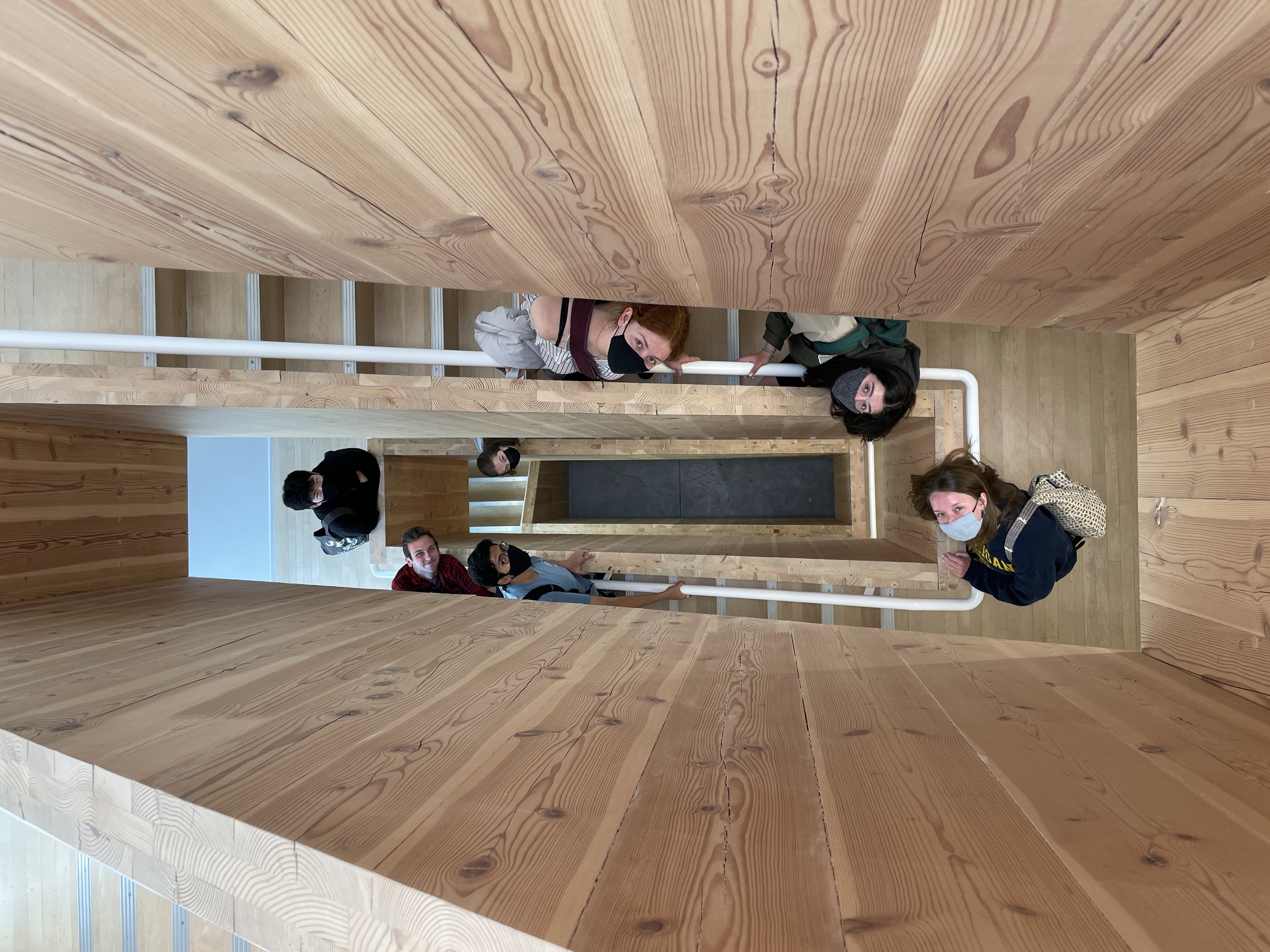
09.2021
Caterpillar debuts at the 2021 Detroit Month of Design. Caterpillar is a long-term pavilion built with 1+1+ Architects that supports the growth of a nature park in Detroit’s Chadsey Condon neighborhood.
![]()
Caterpillar debuts at the 2021 Detroit Month of Design. Caterpillar is a long-term pavilion built with 1+1+ Architects that supports the growth of a nature park in Detroit’s Chadsey Condon neighborhood.

08.2021
The historic single room occupancy housing typology is being reinvented as an affordable housing model with generous shared spaces. Our essay in Cite 102 explores the potential this creates for rethinking housing design.
![]()
The historic single room occupancy housing typology is being reinvented as an affordable housing model with generous shared spaces. Our essay in Cite 102 explores the potential this creates for rethinking housing design.

05.2021
Creating more access to housing cannot be solved solely by building taller, but also through changing how we think of land use. Our design with 1+1+ Architects for low-rise, high density housing for Los Angeles receives an honorable mention in the Low Rise Housing Competition hosted by the Mayor’s Office of LA.
![]()
Creating more access to housing cannot be solved solely by building taller, but also through changing how we think of land use. Our design with 1+1+ Architects for low-rise, high density housing for Los Angeles receives an honorable mention in the Low Rise Housing Competition hosted by the Mayor’s Office of LA.

05.2020
Building Subjects, our book of drawings, photographs, and texts on collectively adapted housing typologies in China, is an AIGA 50 Books 50 Covers winner. The book was co-designed with Normal and Some All None and published by Standpunkte.
![]()
Building Subjects, our book of drawings, photographs, and texts on collectively adapted housing typologies in China, is an AIGA 50 Books 50 Covers winner. The book was co-designed with Normal and Some All None and published by Standpunkte.
